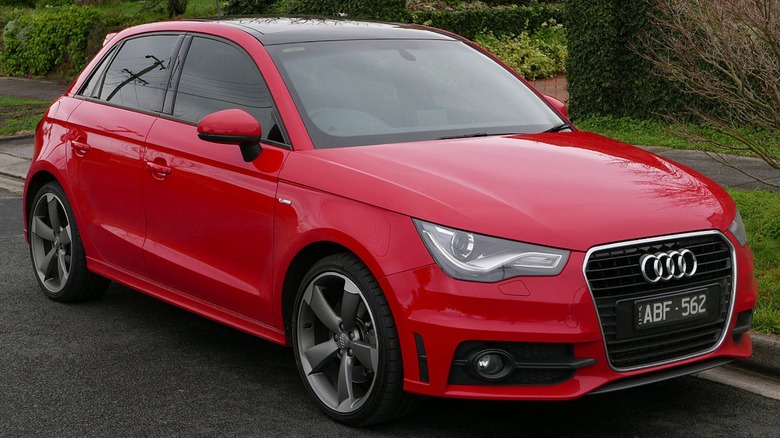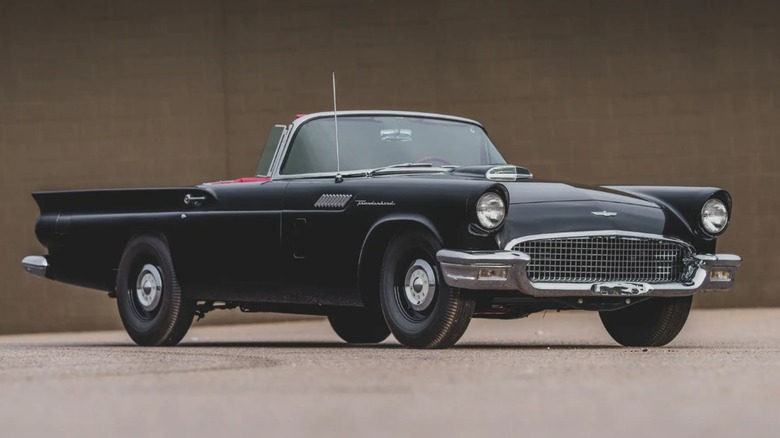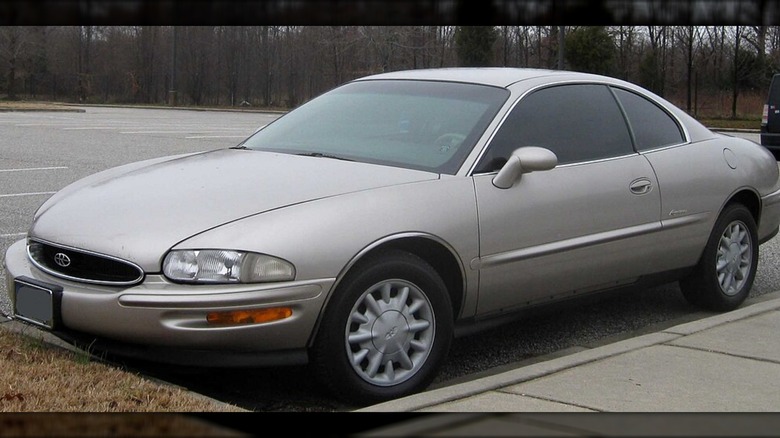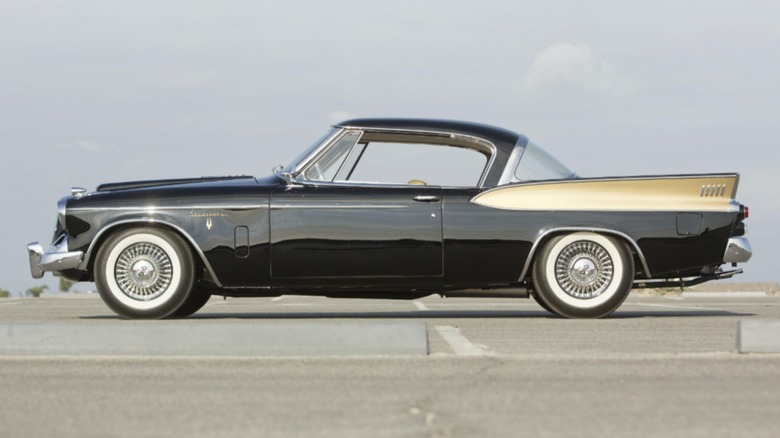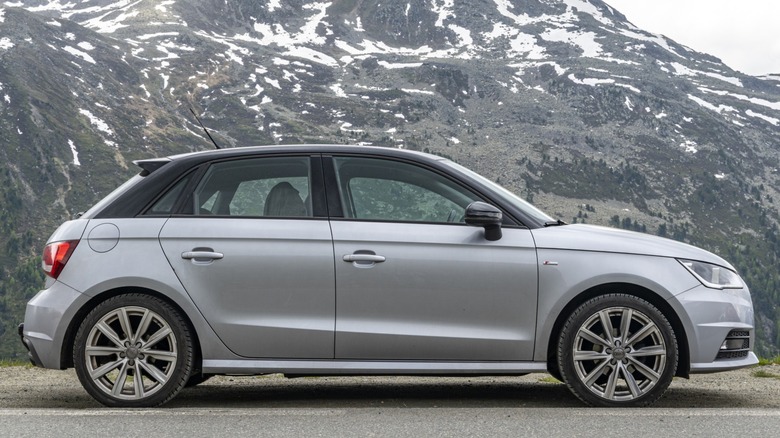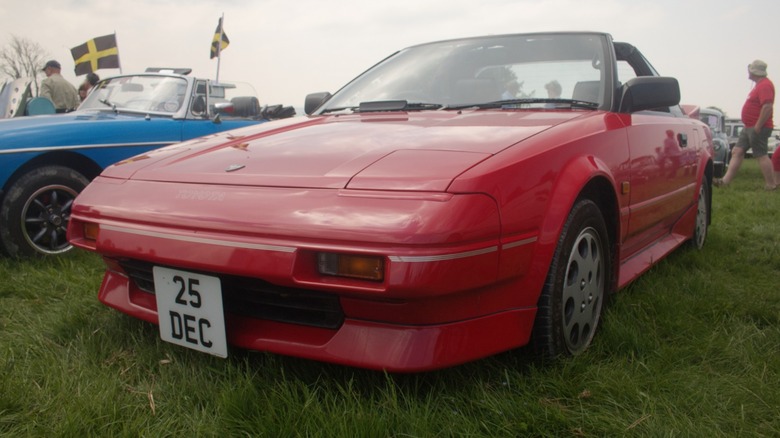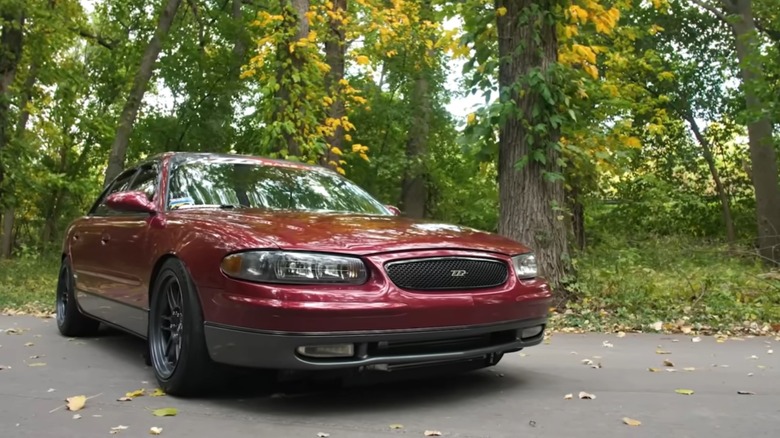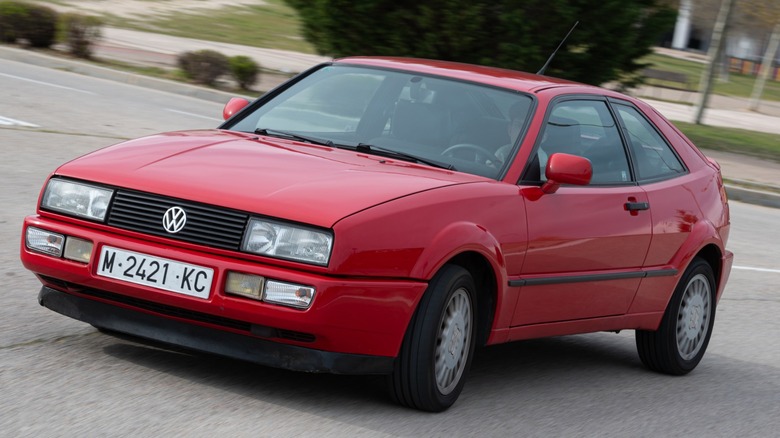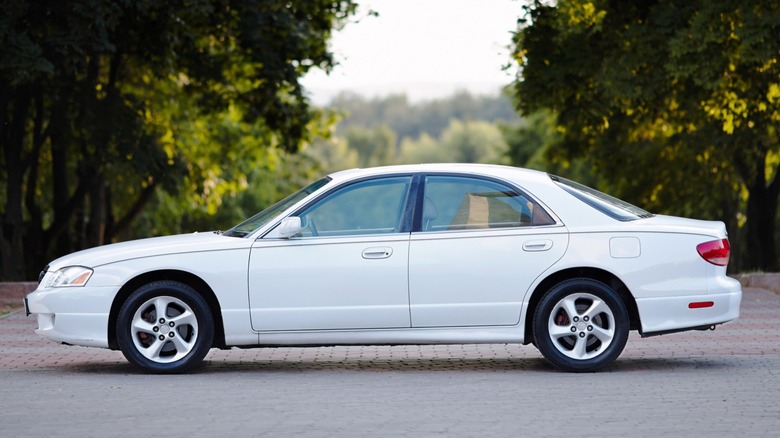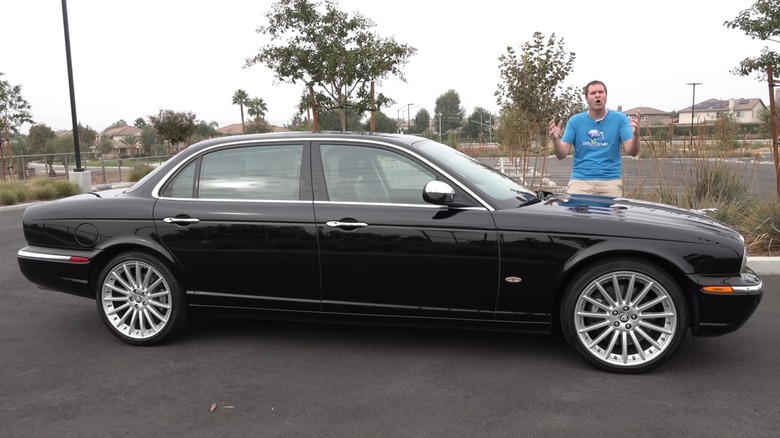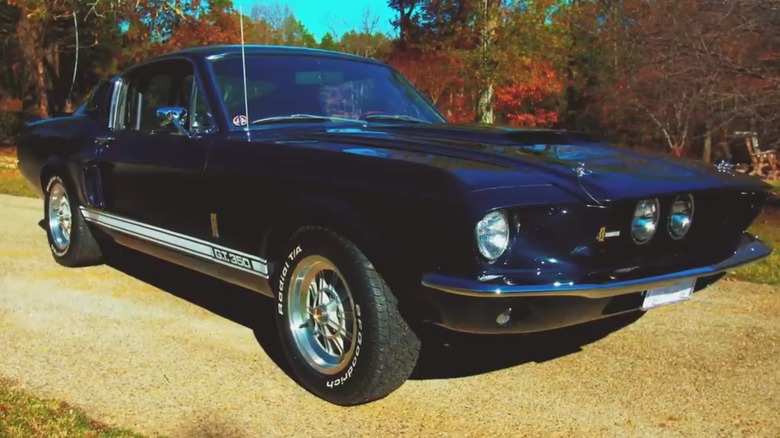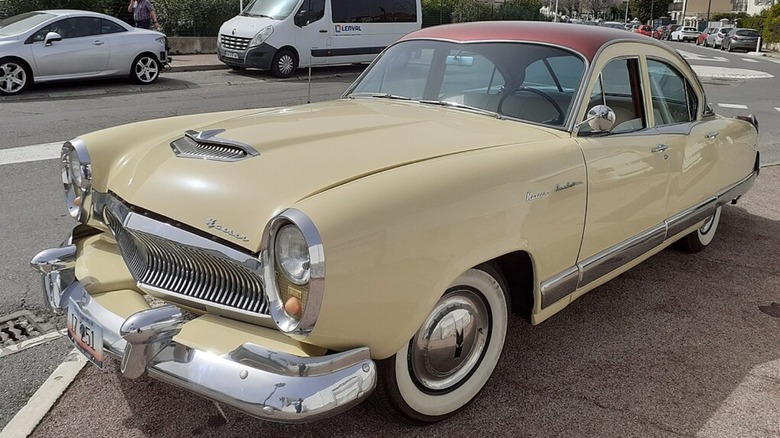11 Cars You Didn't Realize Came With Factory-Added Superchargers
When someone, either an individual or a manufacturer, wants to boost the power output of an engine without raising its displacement, a supercharger is an excellent option. These are found on a vast array of engines in passenger cars, trucks, race cars, and even airplanes. Applications range from relatively simple bolt-on attachments to more complex devices that become an integral part of the engine when installed. But first, what is a supercharger and what does it do?
To increase an engine's power, more oxygen needs to be burned with the fuel. One way to increase it is to physically force more air into the engine, which results in more power. In the simplest of terms, a supercharger is hooked up to the crankshaft with a belt and pressurizes the intake air as long as the engine turns. While they do have some drawbacks, superchargers are highly effective means of boosting performance.
Top fuel drag racers famously use giant superchargers, called blowers, to create ludicrous levels of power to scream down the strip, but superchargers come in many forms, including those installed at the factory on regular production cars. While these are highly subdued compared to NHRA dragsters, the superchargers on them adhere to the same basic principles of engineering. Unless you are already steeped in performance car culture and obsess over model specifications, you may not realize these factory production cars spanning several eras are supercharged.
Ford Thunderbird
When the original Ford Thunderbird debuted in 1955, it was an instant hit. Not only was it an all-new model with sporting credentials, it rolled with one of Ford's early overhead-valve V8 engines — the first Y-block overhead valve V8 coming in 1954 Ford vehicles — replacing the trusty Flathead V8. However, setting aside any excitement generated by new technology, the Thunderbird, aka T-Bird, became an instant hit due to its enduring styling. Nothing else looked like a T-Bird and that remains true today.
T-Birds quickly became a different car when the second-generation models, aka Square Birds, transformed from a sports car and created the personal luxury coupe, which prioritized comfort over performance. But before that switch, one could order a T-Bird in 1957 with an extra helping of horsepower thanks to a McCulloch/Paxton centrifugal supercharger, which boosts pressure using an impeller similar to that found in a turbo.
The high-performance T-Bird, dubbed F-Code, worked with a supercharger that raised output from 245 horsepower to 300, with a tire-squealing 439 ft-lbs of torque. These cars were built to run at NASCAR, and they provided a counter to the fuel-injected Corvette. In addition to the supercharger, engines received a modified camshaft, upgraded cylinder heads, and a dual-point distributor. However, as a $719 option ($8,400 in 2024), they were expensive, and only about 200 were built in 1957. This means they are extraordinarily valuable today, evidenced by the winning $224,000 bid at Sotheby's Amelia Island in 2023.
Buick Riviera
Buick has a long and storied history full of excellent automobiles, along with more than a few duds. But one of them that stands out as a particularly stylish and memorable model is the Riviera. Furthermore, the Riviera tended to be a kind of test bed for Buick's most daring engineering and design, featuring many innovative elements over the years. Some features include clamshell hidden headlights in 1965 followed by flip down headlights for 1966, the gorgeous boat tail design of 1971, a front-wheel-drive V8 in 1979, and touchscreen technology in the Buick Riviera as early as 1986.
While Buick is often thought of as a car for older buyers, performance has been in its blood for a long time. The legendary turbocharged 3.8-liter V6 of the Buick Grand National made an appearance in the FWD models in 1979, and the final years of the Riviera received a supercharger.
For 1995, buyers could opt for a new Riviera equipped with GM's notoriously robust and reliable 3800 V6 with a twin-screw supercharger on the intake manifold. With its multi-port fuel injection, power output reached 225, and the Riviera itself provided sublime comfort and affordable luxury in a curvy but appealing package. These cars were elegant and quick, packed with all the best GM electronics of the era but in an unassuming package perfect for embarrassing cocky Mustang drivers. They make a great retro sleeper to own today.
Studebaker Hawk
Although its memory is today fading from collective memory, Studebakers were once commonly found on roads and highways from coast to coast. The Studebaker lineup was similar to other automakers at the time, with a range of family sedans, wagons, and even pickups. Studebaker offered a more sporty model with luxury trim and a V8 engine. Flight, Power, Sky, and Silver denoted trim levels, with the Golden Hawk sitting atop the hierarchy.
The Hawks were powerful cars for their day, featuring a 275-horsepower Packard 352 V8 through 1956 and replaced in 1957 with a Studebaker 289 V8 equipped with a McCulloch supercharger but with the same output. To accommodate the Jet Stream supercharger, a raised section of fiberglass was added to the hood while the supercharger provided 5 psi of boost through a Stromberg 2-barrel carburetor. Hawks offered an optional Flight-O-Matic transmission and Twin Traction differential to put the power to the ground with power steering and brakes maintaining easy control.
Studebaker continued making the supercharged Hawk until 1964. Sales declined over the years for the Hawk, but sales also declined for Studebaker in general, and production of almost all models were halted in 1963 after a handful of 1964 models had already been built. It's a shame they suffered this fate as the Studebaker Hawks remain some of the most attractive and interesting cars of their era. Many remain today, but auction bids can reach as extraordinarily high $107,800, a final bid realized by Bonham's in 2014.
Audi A1
Although the Audi name associated with auto production goes back to the early 20th century, its formal association with Volkswagen began in 1965. Just four years later, Audi of America began selling cars built as luxury companions to the affordable Volkswagen models, eventually establishing itself as a premier European luxury carmaker offering a wide array of upscale models to American buyers. While a full range of cars have been for sale for decades, some Audi models never make it overseas, remaining reserved for foreign markets, such as the A1.
While the A1 may not have a turbocharged W8 or a mighty V10, the little 4-banger still packs a serious punch. It uses a 1.4-liter TFSI engine, which you may know as one of Volkswagen's turbocharged engines, but in the A1, it also has a supercharger. Smaller cars make more sense in European cities, and drivers there need small cars but still want luxury and performance. Good for 185 horsepower, it makes the little A1 a screamer.
Some Americans do like small cars and opt for a Mini or similar model, but nothing like the A1 has ever been sold here. The impressively quick Toyota GR Corolla is the closest thing to date, but that is not a luxury car. For anyone who likes it, the first A1 models produced in 2010 will be legal to import in 2035, so you will have that to look forward to.
Toyota MR2 Mk1
The 1980s produced a sometimes weird array of automobiles. Many models are now sought-after collectibles while others are models those of us alive back then would rather forget — here's looking at you, Chevy Citation. However, some '80s cars remain desirable even with the allure of nostalgia removed.
Back in the '80s, Toyota was still an up-and-coming brand ready to push the envelope to gain market share. To attract younger buyers, it released in 1984 a mid-engine sports car called MR2. Like a go-kart for the road, the MR2 hugged corners, turned on a dime, and put drivers in touch with the road. It was a genuinely fun and sporty car to drive, and its modest 1.6-liter 4-cylinder engine provided ample power for spirited driving because it hardly weighed anything.
For some people, good is never good enough. For them, Toyota offered a new supercharged version of the MR2, which Car and Driver called, "deceptively quick." The boosted version brought power up from 112 to 145, which sounds weak today, but when a Mustang GT barely topped 200, that was incredible. Besides, anyone driving one would be having so much fun pushing it into its boost, they wouldn't care about anything else on the road anyway.
Buick Regal GS
While Buick's Regal began as a lumbering and bloated personal luxury trim level of the Century model, it morphed dramatically over the years, becoming one of the most popular mid-size coupes of the '80s, including the incredible high-performance Grand National model, to front-wheel-drive bland slab of blandness before the close of the millennium. After a brief hiatus, subsequent generations followed the same penchant for the bland.
Despite going out as a fairly unremarkable bog-standard GM sedan, Buick offered up one spicy nugget that few would ever know without being told, the Buick Regal GS. Buick had no problem making high-performance vehicles — it was part of its rich history. In the late '90s, it decided to turn its Regal into a deceiving little rocket by strapping an Eaton supercharger onto the 3800 GM V6 and giving it a 240-horsepower output. With increased power, the bland sedan became exceedingly more exciting. But unlike the slick all-black Grand National, this Regal received nothing special on the exterior, making it the perfect sleeper.
Because the 3800 V6 is so well-built, and these cars were made with modern electronics, they can be driven regularly despite having aged more than two decades. For around $10,000 or less, very well-kept examples can be found and an affordable choice for a subdued but sporty classic daily driver.
Volkswagen Corrado
Volkswagen sports cars have never been its raison d'etre — its focus has always been economical small cars built for a worldwide market. A few decent sporty machines have come from the Wolfsburg, Germany company, including the simple but stylish Karmann Ghia from 1955 to 1974 and the Giugiaro-styled Scirocco from 1974 to 1992. More recently, it offered the Eos, which is more like a convertible Golf than a true sports car. In-between the latter models came the ambitious but unreliable VW Corrado, debuting in Europe in 1989 and a year later in the U.S.
While the Corrado may have leaned towards the hot hatch class, its sloped rear hatch and availability of moderately powerful engines definitely put it in sport car territory — it was effectively a sports-hatch hybrid. Corrados initially offered an adequate but not spectacular 1.8-liter 4-cylinder engine. Since this car debuted before the vaunted VR6 engine, to offer a performance variant, VW opted for forced induction.
Having experimented with superchargers in the late '70s and with installation in the production Polo G40, VW added one to an essentially unchanged 1.8-liter and called it the G60. This bumped engine output from 138 to 160 horsepower and gave the little hatch some spunk running through the corners. While the G60 was a lively and fun car, it was soon replaced with a 188-horsepower VR6 model, negating any reason to keep the G60 around. Even then, poor sales and quality control saw the Corrado discontinued shortly thereafter.
Mazda Millenia
For most of its history, Mazda has not only experimented with experimental designs, it has pioneered them. The somewhat oddball Wankel rotary engine in its RX-7 and RX-8 sports cars was a defining feature of the company for three decades, and the latest Mazda Skyactiv-G technologies demonstrate unorthodox solutions to common engineering problems. Knowing this, it should be no surprise that Mazda developed an unconventional engine for its attempt at cracking into the 1990s luxury car market with its Millenia sedan.
After Lexus, Acura, and Infiniti proved Japanese luxury cars could sell, Mazda implemented a plan to market its own line of upper crust automobiles. While its venture ultimately collapsed, the upscale Eunos 800 came to North America as the 2000 Mazda Millenia. Regardless of what badge it was sold under, it was indeed a fine example of Japanese luxury of the era, but its engine was pure Mazda eccentricity.
The Millenia S came with a 210-horsepower 2.3-liter V6 that ran on the Miller cycle. While the vast majority of engines use the Otto cycle, this engine is built such that the intake valve is kept open for a longer duration and improves efficiency, but forced induction is required to maintain compression. Mazda accomplished this by adding a supercharger not for high-performance, but efficiency. Though innovative, efficiency gains were minimal while adding expensive complexity, leading to poor sales and cancellation in 2001.
Jaguar XJR
Jaguar cut its teeth and built its sporting heritage upon a venerable straight-6 engine design that served it well to not only sell cars to gentlemen of discriminating taste, but also to acquire championships on the track. The Jaguar V12 arrived in 1971 as a doubled-up companion to the six, producing power simply by increasing displacement and cylinder count. But when continuation of V12 production while keeping up with safety and emissions regulations became an untenable proposition, Jaguar, which had been loath to build a V8, relented and built one for the 1996 model year.
The V8 Jaguar had developed proved to be excellent. At introduction it was praised for its smoothness, and its sophisticated 32-valve V8 provided drivers with the powerful luxury for which Jaguar was known. Starting in 1994, Jaguar offered a supercharged inline-six model dubbed XJR. With a revised XJ in 1997, the XJR received the new V8 with forced induction thanks to an Eaton M90 supercharger.
The boosted Jag increased output from 237 to 322 horsepower, a substantial gain that was felt instantly by anyone mashing down the accelerator. And with the excellent power output, Jaguar buyers received an elegantly styled car that blended modern design with the classic XJ look maintained since its 1968 debut. Subsequent XJrs lost the classic look but kept the boosted V8, but sadly, 2019 was the last year as the brand continues its goal of total electrification.
Ford Mustang Shelby GT350
While not common and ubiquitous, superchargers can pop up in unexpected places, such as Shelby American. Carroll Shelby worked with Ford to apply his unique touch to standard production Ford Mustangs to turn out some of the best performing cars of the '60s, and most, if not all, of them later turned into coveted classics. But even ardent Ford fans may be unaware Shelby also installed superchargers upon request.
Shelby modified several models of Mustang in the '60s, but the most iconic and famous may be the Ford Mustang Shelby GT350. Introduced in 1965, the first full year of Mustang production, the GT350 could be ordered from a Shelby American via a Ford dealer fortified by several modifications. It was built ready for the track, and though highly modified, these cars came with Ford's official backing.
In 1965, Carroll Shelby sent a GT350 to Paxton for installation of a supercharger. As the story goes, when it returned to Shelby American and then outran a 289 Cobra, Shelby placed an order for 500 Paxton superchargers. While he initially planned to offer a special GT350S, Shelby ultimately added the Paxton part as an option to be bought over the counter or installed for a fee. Customers could also order Shelbys with the Paxton as a dealer-installed accessory, making it an official Ford product. Not many of these were sold to customers, and those that remain are among the most collectible of all Shelby GT350 cars today.
Kaiser Manhattan
Shipbuilder industrialist Henry J. Kaiser looked at the postwar period after WWII anticipating the needs of the public, seeing transportation as one of the essentials to be met. Therefore, in 1945, he enlisted Joseph W. Frazer to create the Kaiser-Frazer Corporation for the manufacture of automobiles, delivering prototypes in 1946.
The cars built by the pair did not have a significant impact on the industry or the public and the venture only lasted until 1955. Cars that had once been warmly received soon became dated and obsolete as Kaiser could not keep up financially with the legacy automakers and their massive development budgets. Kaiser eventually ended automobile production when he purchased Willys-Overland, producer of Jeep vehicles, a much more sound business venture.
While Kaiser cars had a limited impact overall, some of them were rather interesting. The Kaiser Manhattan, a car with interesting styling, is a good example of an interesting model from the period, particularly in the way engineers tried to keep up with competing engine technology on a tight budget. The 1954 Kaiser Manhattan came from the factory as standard with a supercharged flathead inline-six producing 140 horsepower, which was competitive with contemporary overhead-valve V8s — the Dodge Red Ram 241 V8 made the same power equipped with overhead valves in its Hemi heads. Despite this accomplishment, it was all for nought as sales of all remaining Kaiser models in 1955 dipped to just 1,200 cars, and production ended after that.
